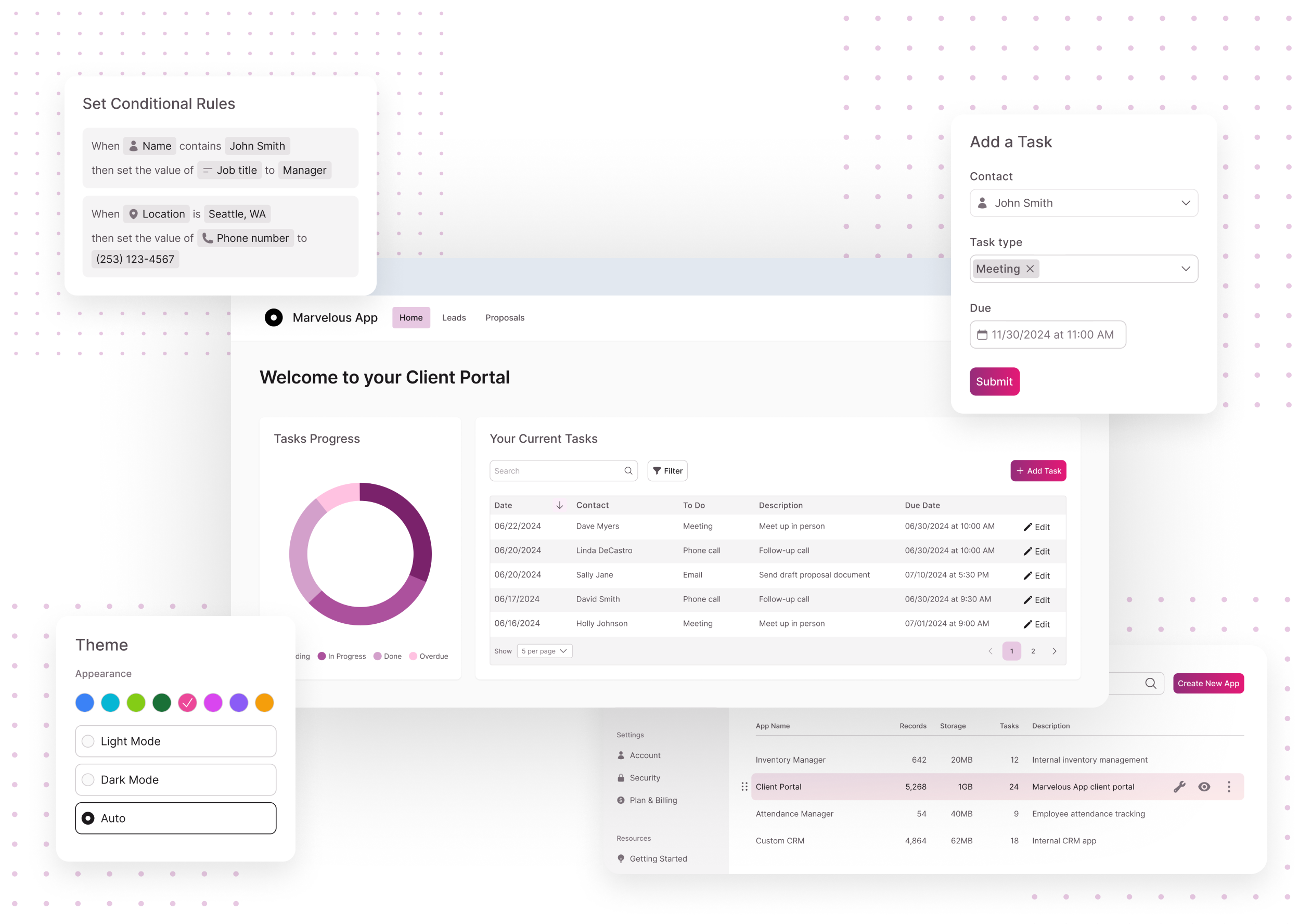No-Code Operating Systems for Open System Data Source Production: Conserve Time and Resources
Discover Just How Scalable Data Sources Can Be Utilized Without Coding to Improve Your Service Procedures
In today's fast-paced company environment, the ability to handle and assess data efficiently is critical. Scalable data sources, particularly when paired with no-code solutions, offer a transformative approach that encourages non-technical individuals to improve procedures. By using devices that need no coding proficiency, companies can boost their operational capacities while minimizing reliance on IT sources. The real concern lies in recognizing just how these options can be tailored to certain company requirements and what potential obstacles may arise in their implementation. Exploring these facets can light up the course to functional excellence.
Comprehending Scalable Data Sources
Scalable data sources are important for contemporary organization procedures, allowing companies to efficiently take care of boosting quantities of data without giving up performance. These databases are created to adjust and grow to the altering needs of a service, ensuring that they can manage bigger datasets and even more complex questions as organizational demands evolve.
Comprehending scalable databases includes recognizing their two primary kinds: upright scaling and straight scaling. Upright scaling, or "scaling up," entails adding more power (CPU, RAM) to an existing web server to boost efficiency. On the other hand, horizontal scaling, or "scaling out," entails including a lot more servers to distribute the lots, which frequently causes greater flexibility and mistake resistance.
An additional crucial facet is the design of scalable databases, which can be either non-relational or relational. Relational data sources, such as MySQL and PostgreSQL, are structured and use SQL for queries, while non-relational data sources, like MongoDB and Cassandra, supply even more versatility with disorganized information.
Inevitably, comprehending scalable databases is essential for companies intending to take advantage of data as a strategic asset, allowing them to stay affordable in a significantly data-driven environment.
Benefits of No-Code Solutions
Opening the potential of no-code services empowers organizations to improve operations and improve productivity without the need for considerable programs knowledge. These platforms allow non-technical individuals to create, customize, and handle databases easily, therefore equalizing accessibility to technology throughout groups.
Among the primary benefits of no-code services is their speed of application. Businesses can rapidly deploy applications and automate procedures, substantially decreasing the moment invested on growth cycles. This agility makes it possible for organizations to respond immediately to market changes and customer needs, fostering an one-upmanship.
In addition, no-code platforms decrease dependence on IT divisions for everyday jobs, enabling technical teams to concentrate on even more complicated tasks that require specialized skills. This change not only enhances source allocation however likewise advertises advancement within the organization.
Cost-effectiveness is an additional advantage, as no-code services can lower advancement and maintenance expenditures. By minimizing the need for coding knowledge, firms can harness the abilities of their existing workforce without the overhead of working with additional employees.
Popular No-Code Database Equipment
The surge of no-code solutions has actually resulted in the introduction of different database devices that deal with organizations seeking efficiency and access. These devices equip individuals with limited technical proficiency to produce, manage, and adjust databases flawlessly.

Caspio stands out for its capacity to construct internet applications without any type of coding. It allows businesses to create robust databases and deploy applications promptly, satisfying different sector demands. In a similar way, Flair uses powerful information and straightforward interfaces management capabilities, making it possible for organizations to build custom applications customized to their process.

Use Cases in Business Operations
How can businesses take advantage of database tools to enhance their operations? Scalable databases offer companies with resource effective capacities to handle and assess data without the requirement for extensive coding expertise. These tools can improve different organization procedures, ultimately resulting in improved performance and efficiency.
One popular use instance is client connection management (CRM) Organizations can use scalable databases to track consumer interactions, preferences, and feedback, enabling tailored interaction and better solution. By streamlining this information, teams can team up better and react to client needs in real-time.
An additional considerable application is stock management. Firms can employ no-code data source tools to monitor stock levels, track shipments, and projection demand. This makes sure optimal supply levels, minimizes waste, and decreases stockouts.
In addition, project monitoring can gain from scalable databases by permitting teams to take care of tasks, deadlines, and sources in a combined system. With real-time updates and data visualization, job managers can make enlightened decisions.
Obtaining Began With Implementation
Applying scalable databases in service operations needs an organized approach to guarantee effective assimilation and usage. The very first step is to perform a complete needs evaluation, determining details company needs, data types, and anticipated development patterns. This foundational understanding will assist the choice of the appropriate database service.
Next, select an user-friendly, no-code database system that aligns with your functional objectives. no-code. Several modern remedies supply instinctive interfaces, allowing non-technical users to manage data efficiently. After choosing a system, develop a clear information style that lays out just how information will certainly be arranged, accessed, and kept
Training is crucial; click to read more ensure that employee are equipped with the necessary abilities to make use of the data source. Take into consideration giving tutorials or workshops to acquaint personnel with the system's performances.
Conclusion
In verdict, the combination of scalable databases with no-code solutions offers considerable advantages for business procedures. Ultimately, leveraging these modern technologies can lead to improved performance and operational performance, positioning organizations for sustained development in an affordable landscape.
One prominent no-code data source tool is Airtable, which incorporates the functionality of a spread sheet with the power of a database.Exactly how can businesses take advantage of data source tools to boost their operations? Organizations can utilize scalable data sources to track consumer interactions, preferences, and responses, allowing customized interaction and far better service.Executing scalable data sources in service procedures requires a structured approach to make certain successful assimilation and application.In verdict, the assimilation of scalable databases with no-code remedies offers significant advantages for business operations.